Daguerreotype Object View
The support is composed of a sheet of silver plated copper and is typically referred to as the “plate.” The copper is generally 0.4 mm thick and the silver layer approximately 0.01 mm. There were several ways to plate the copper with silver. The most common was a process called Sheffield plating in which copper and silver plate were placed in contact, heated to just under the melting point of silver, cooled, and then repeatedly run through a rolling mill, slowing closing the gap between the rollers until the plate was the desired thickness. The plates increased in length during this process and were cut down to standard sizes. Another way, which became commercially popular in the mid-1850s, was to electroplate the silver onto the copper plate. Electroplating uses an electro-chemical reaction in which silver is deposited onto the surface of the copper plate through the use of a galvanic battery. There were several ways to do this, but one common way was to immerse the copper plate with a silver anode into a saturated solution of silver chloride or silver nitrate and potassium cyanide. The anode was hooked to a galvanic battery which produced an electric current causing the silver in the bath to chemically deposit onto the copper plate. Electroplating was also used by practitioners to add more silver to the plate allowing it to be more finely polished in a process also known as galvanizing or resilvering. The French silver industry required silver to bear a hallmark and maker’s mark. The hallmark includes numbers, words, initials or images that denote the quality or the proportions of silver to copper. The word “double” identifies the silver as plated and the scale symbol means that it was electroplated. The maker’s mark is a design including words, initials, or images indicating the manufacturer of the plate. US manufacturers followed this practice as well to indicate that their plates were as good as French plates.
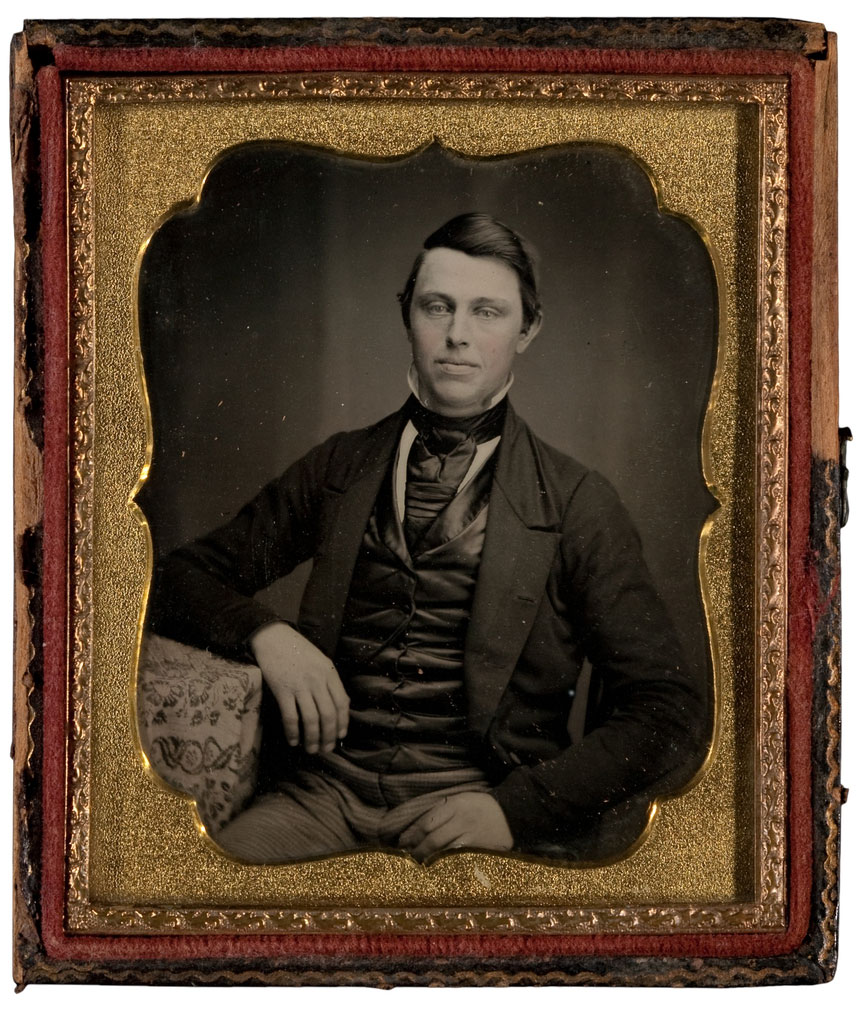
American and British daguerreotype as well as ambrotypes and tintypes are presented in cases as seen here. Cased daguerreotypes are recognizable because the image rests on a highly polished metal plate. See Surface View.
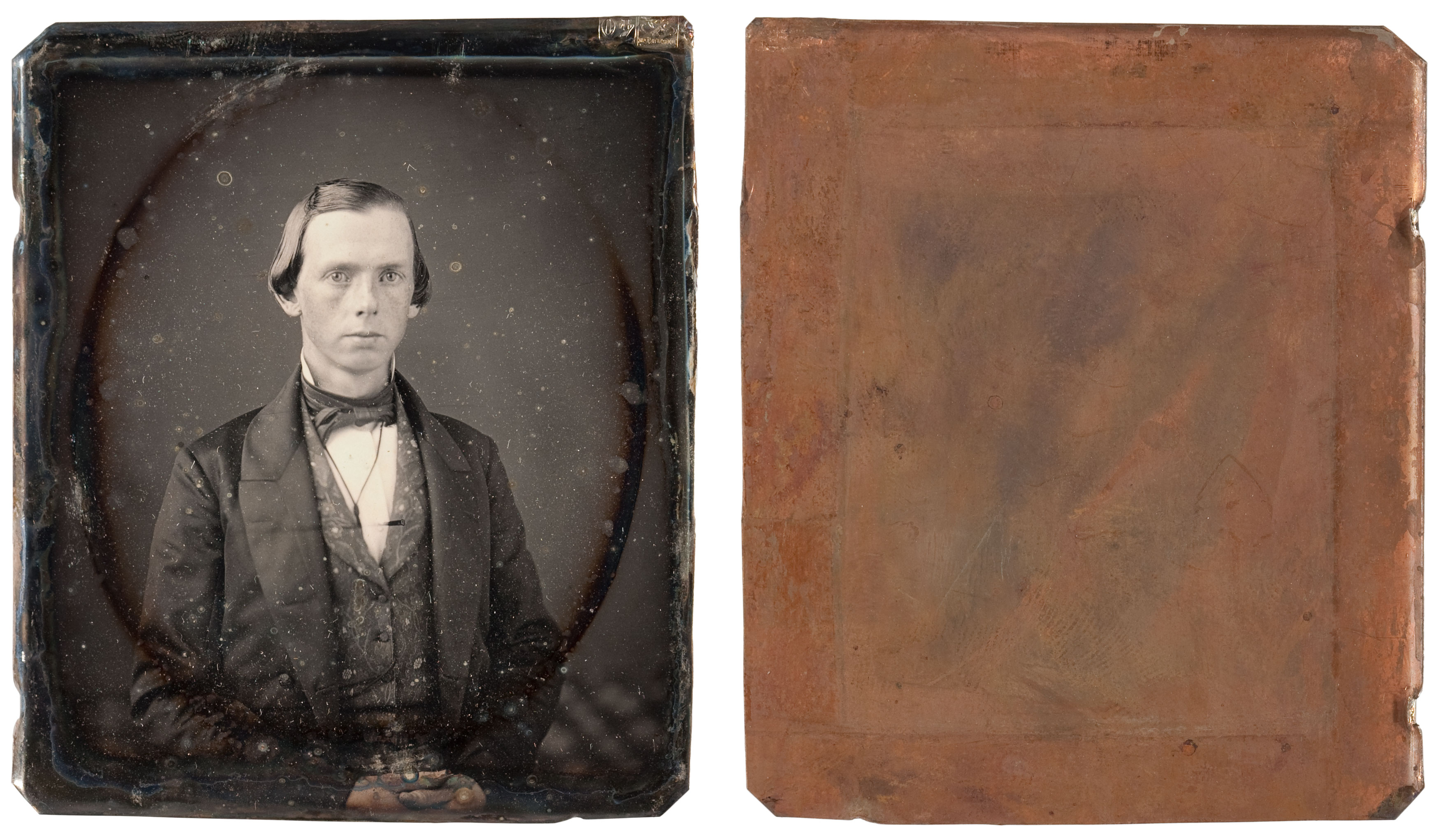
Un-cased daguerreotypes are pure silver on the front and copper on the back. It is not recommended to uncase a daguerreotype.
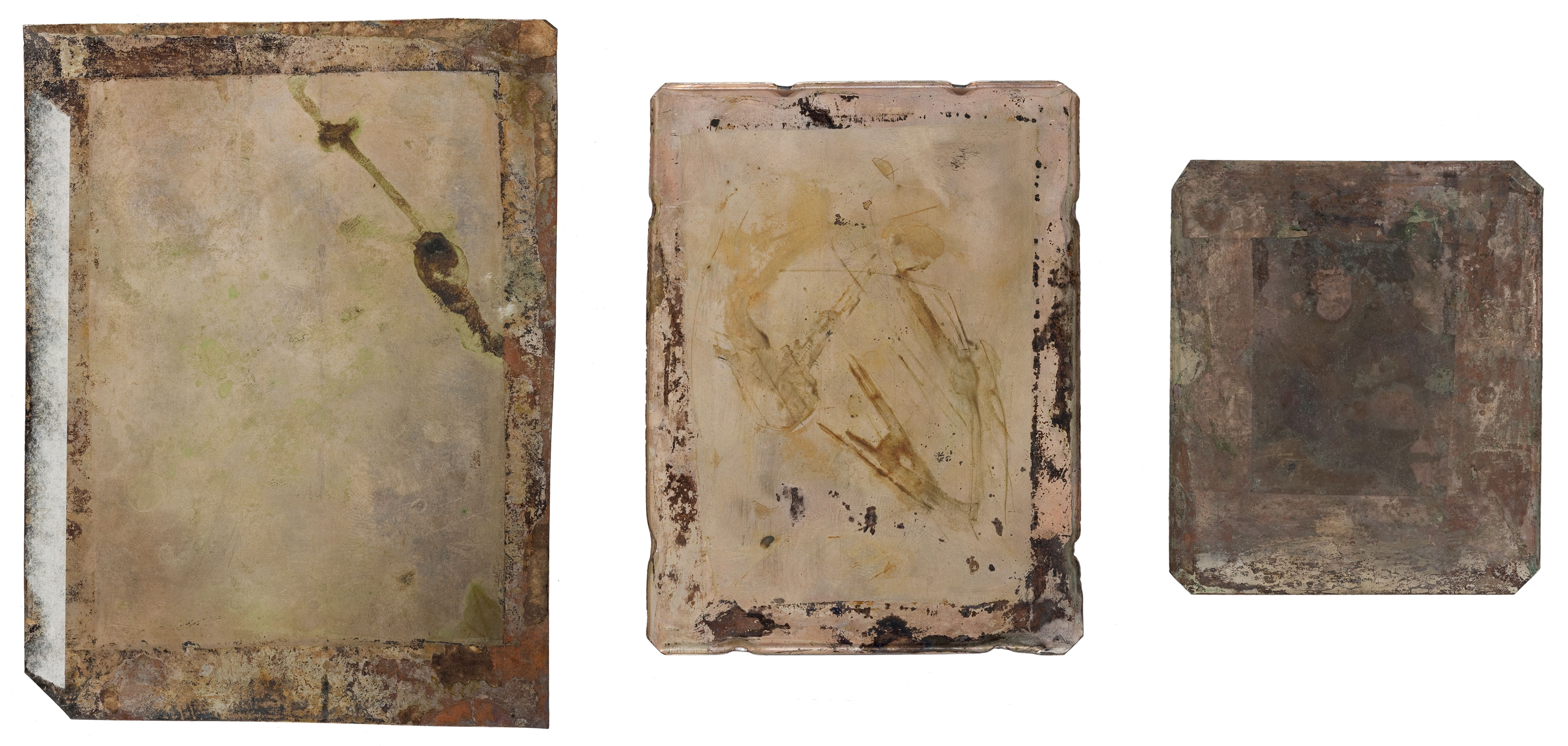
Galvanizing or resilvering, as practiced primarily by American photographers, results in some silver deposits on the back of the plate visible as sliver swirls. It is not recommended to uncase a daguerreotype.
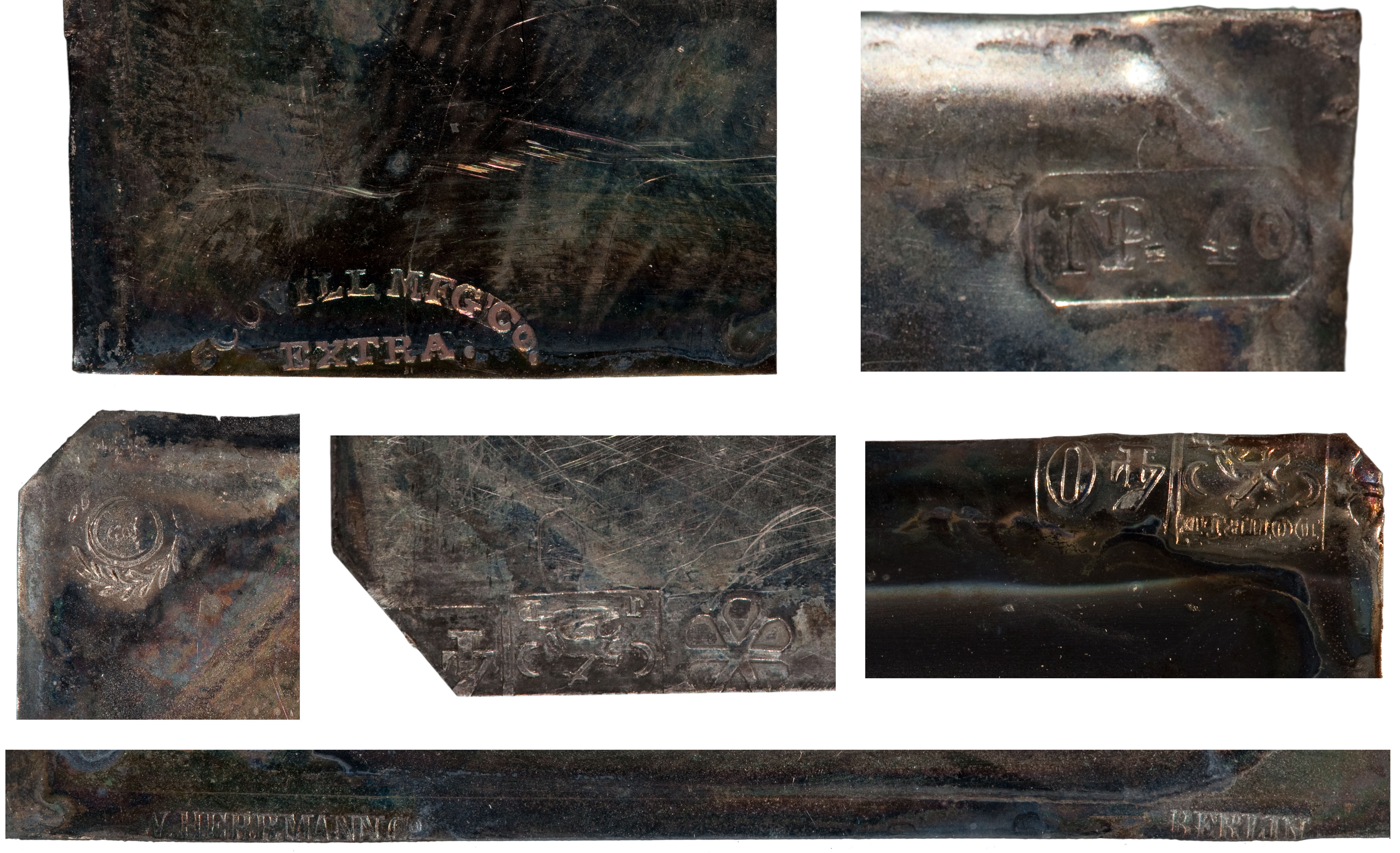
French and most US manufacturers embossed plates with a hallmark and maker’s mark. The number indicates the proportion of silver to copper. The name and/or symbol of the manufacturer is present. The word “double” identifies it as Sheffield plated silver and the scales indicate that it was electroplated.
The image is composed of very small, nanoparticles of silver-mercury amalgam and gold resting on the surface of the silver plate. How exactly the image is formed and where and how the gold rests in relation to the image particles is not universally agreed on but it appears that the gold is deposited on both the image particles and the silver substrate. The image is a direct positive, meaning the image particles are in the highlights rather than the shadows. Due to the reflective nature of the silver substrate and the way in which the image particles scatter light, the image appears both as a positive and a negative depending on the viewing angle. The daguerreotype is capable producing an image with extremely high resolution, creating very detailed, almost holographic images. The image is typically monochromatic (black and white) with some exceptions. Over exposure of the highlights causes solarization, resulting in a blue tone in the highlights. Images may also be hand colored.
Chemical deterioration impacts the overall appearance of the daguerreotype. The major form of chemical deterioration is tarnish, or corrosion, which is composed of extremely thin films of silver oxide and silver sulfide and appears as interference colors ranging from brown to blue to salmon. Edge tarnish usually forms from the outside-in due to oxidizing gases and pollutants entering the package, and primarily consist of silver sulfide. Mat tarnish, forming where the mat contacts the plate, is typically composed of silver oxide.
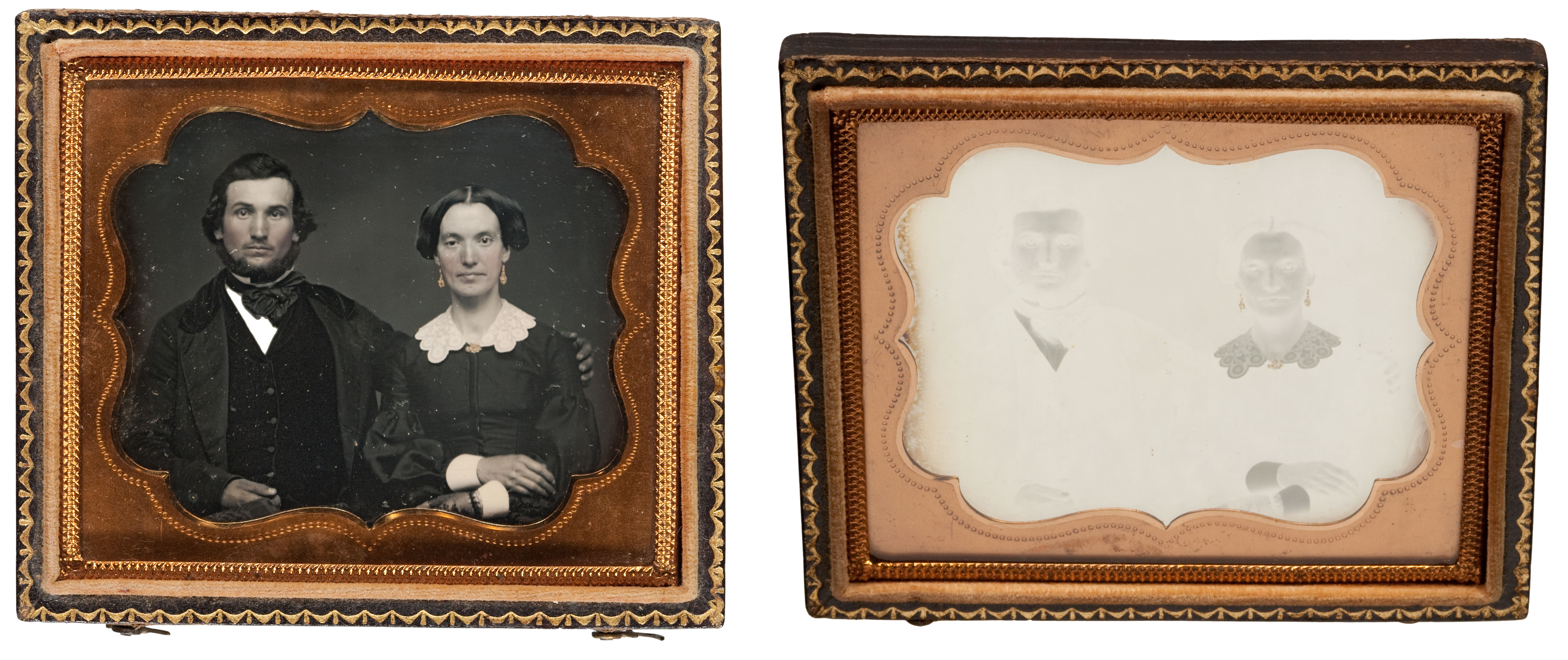
The image appears as a positive or negative depending of the viewing angle.
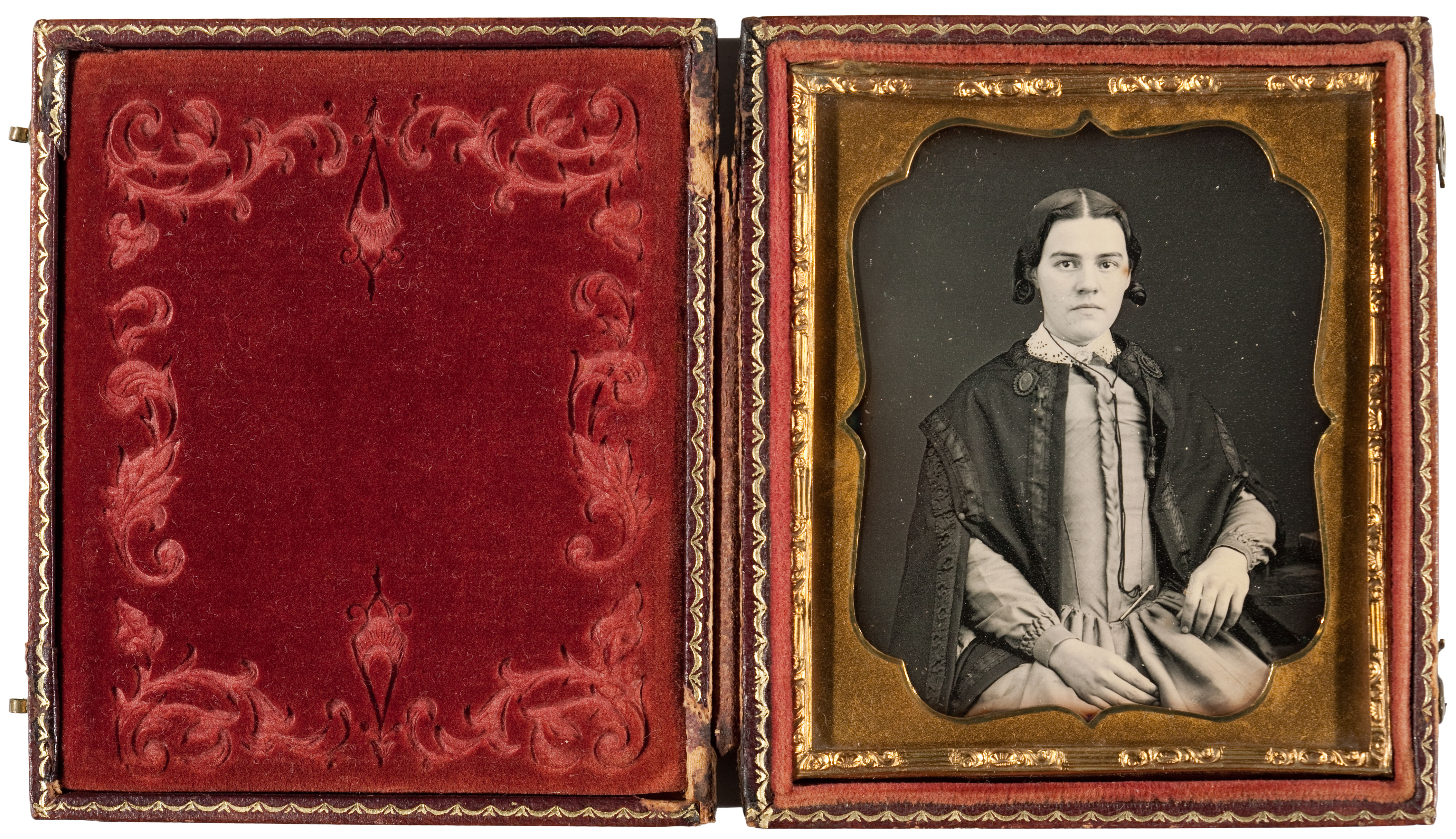
Daguerreotypes are usually monochromatic and relatively neutral in tonality.
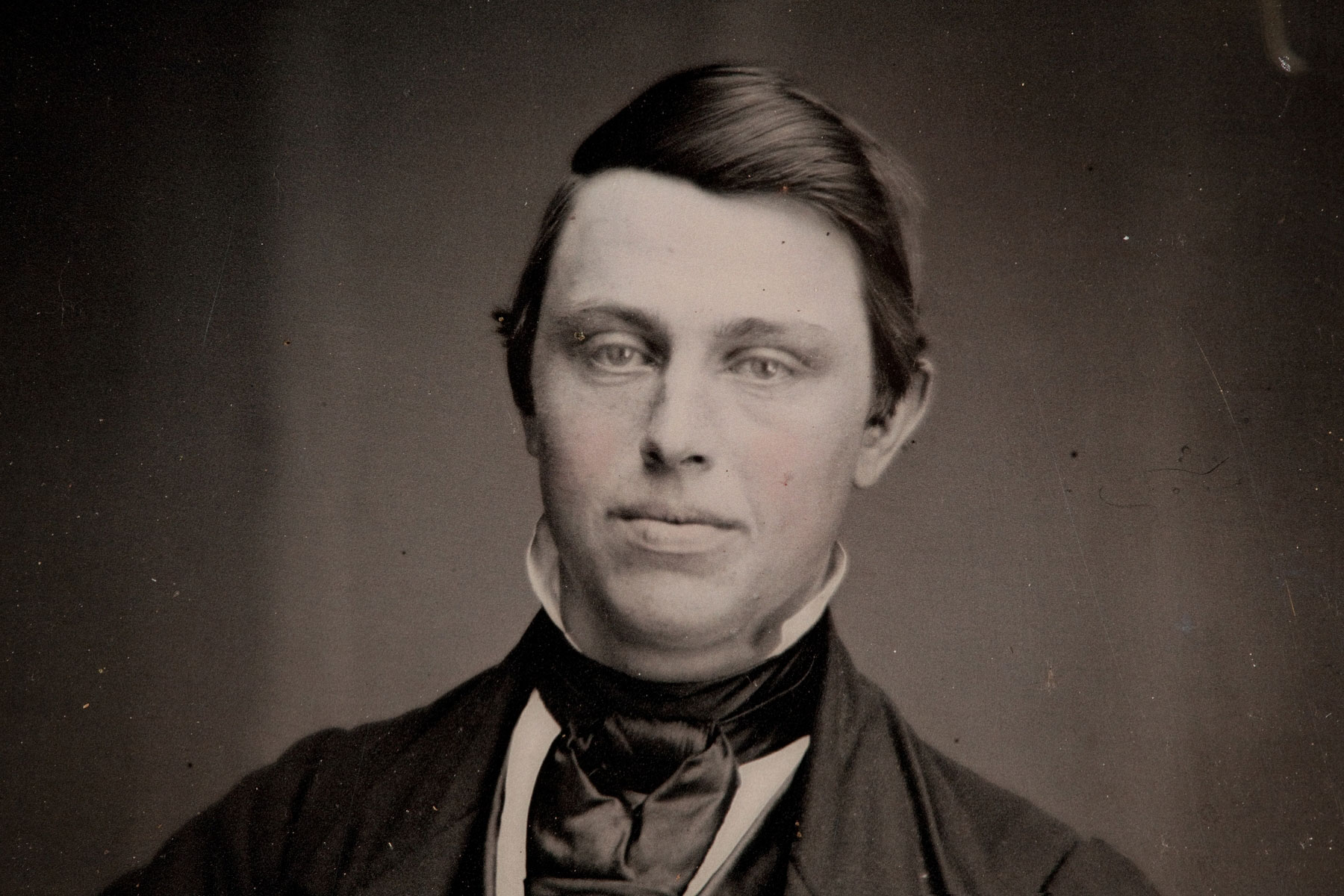
Daguerreotypes have extremely high resolution resulting in a highly detailed image. The image is monochromatic often with applied color to portraits.
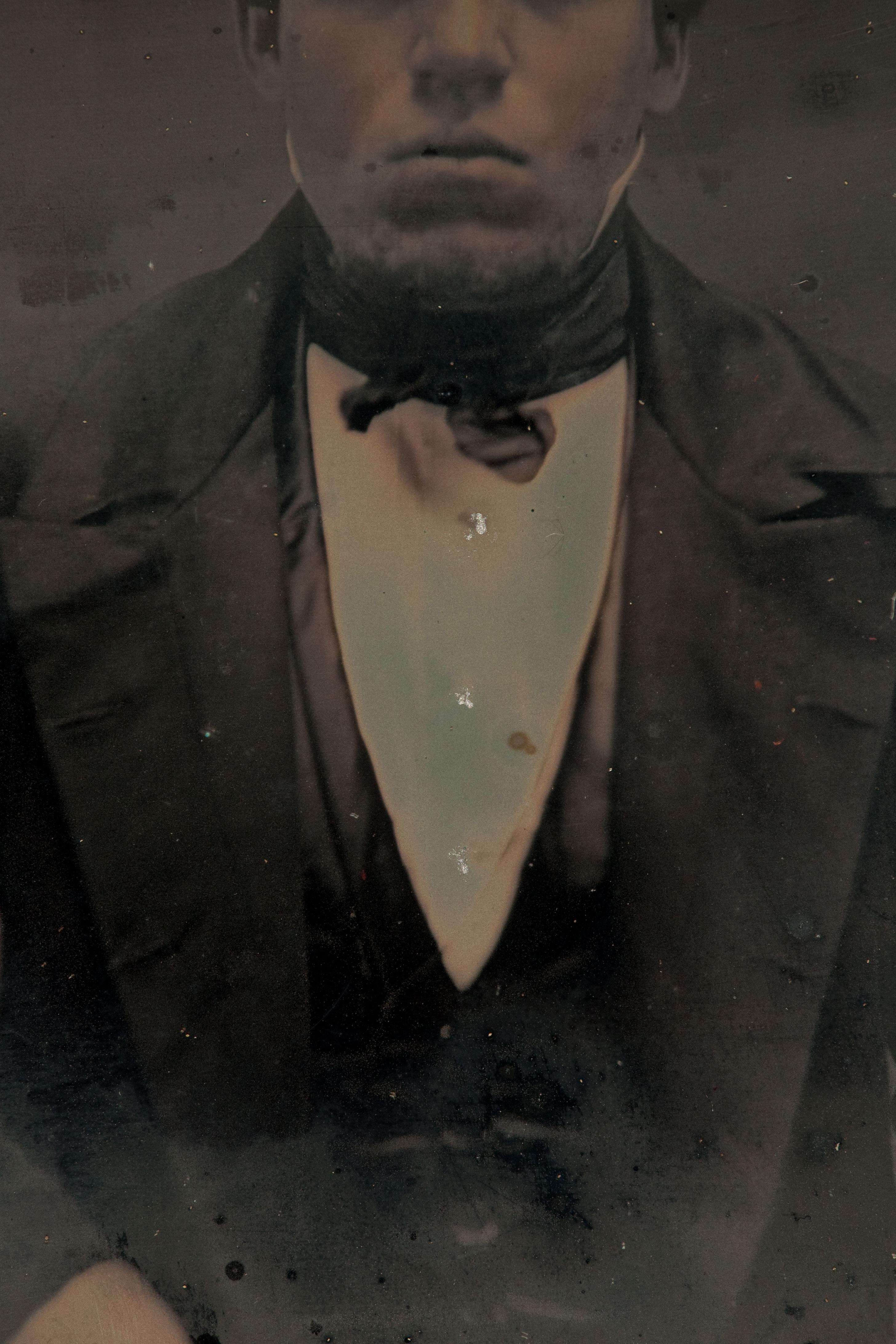
Over exposure can result in highlights which appear blue.
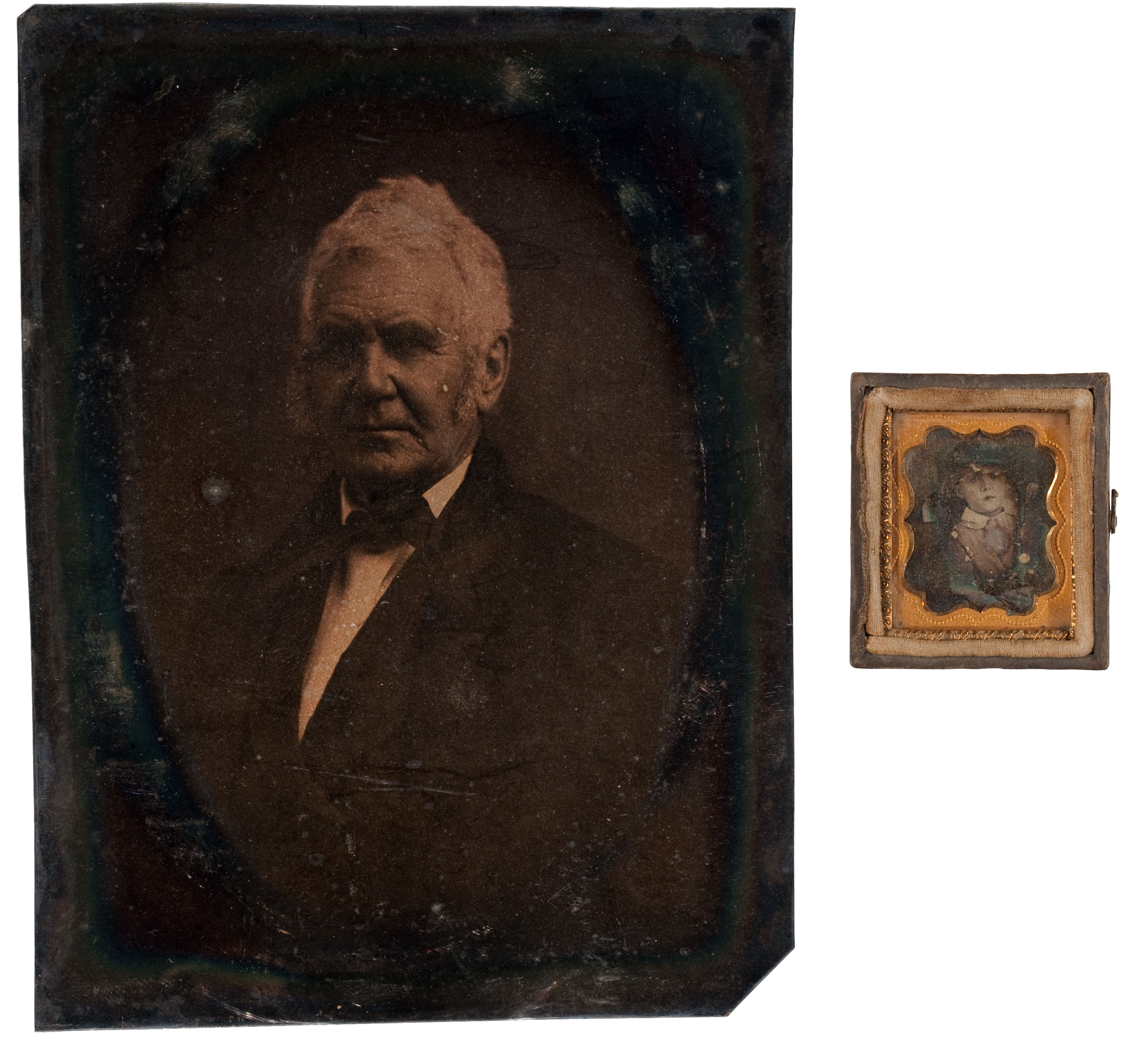
Daguerreotype tarnish, or corrosion, is composed of extremely thin films of silver oxide and silver sulfide and appears as interference colors ranging from brown to blue to salmon.

Mat tarnish, forming where the mat contacts the plate, is typically composed of silver oxide.
- Whole plate, 6 ½ x 8 ½ in.
- Half plate, 4 ¼ x 5 ½ in.
- Quarter plate, 3 ¼ x 4 ¼ in.
- Sixth plate, 2 ¾ x 3 ¼ in.
- Ninth plate, 2 x 2 ½ in.
- Sixteenth plate, 1 3/8 x 1 5/8 in.
- Gem plate, 1 x 1 in.
- Whole plate, 16.2 x 21.6 cm
- Half plate, 10.8 x 16.2 cm
- Third plate, 7.2 x 16.2 cm
- Quarter plate, 8.1 x 10.8 cm
- Sixth plate, 7.2 x 8.1 cm
- Eighth plate, 5.4 x 8.1 cm
- Ninth plate, 5.4 x 7.2 cm
- Sixteenth plate, 4.0 x 5.4 cm

Daguerreotypes made in the US and Britain are commonly housed in protective wooden cases covered in pressed paper or leather and lined with fabric.
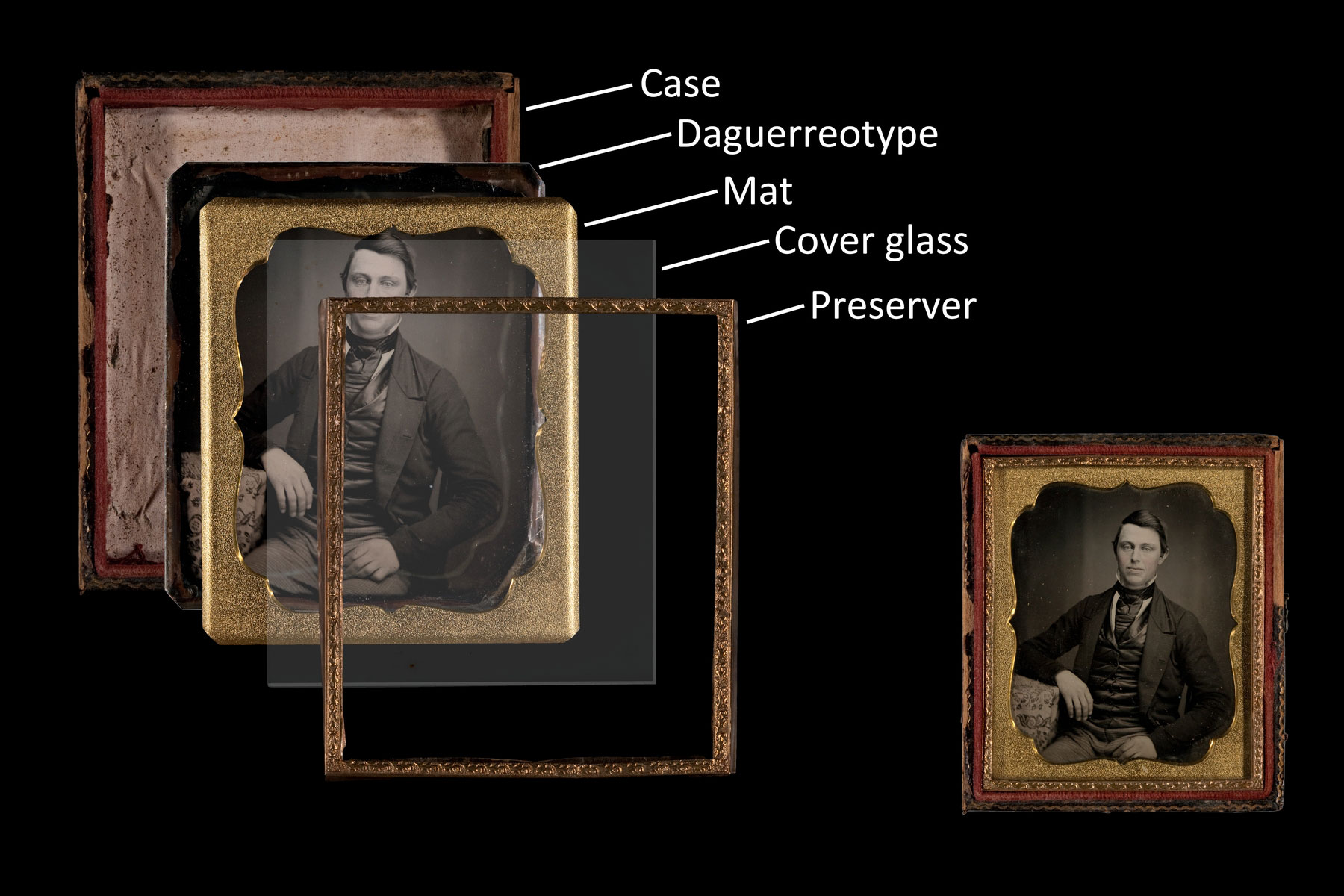
The components of the daguerreotype package consist of the plate, a brass mat, and a cover glass bound together with paper tape over which a decorative brass preserver is folded.

Early daguerreotypes, such as this, often have no preserver, a plain brass mat, and a simple silk pad. Cases and the different elements of the package became more elaborate over time

Shown here are, from left to right, are a half plate, quarter plate, sixth plate, ninth plate and sixteenth plate.
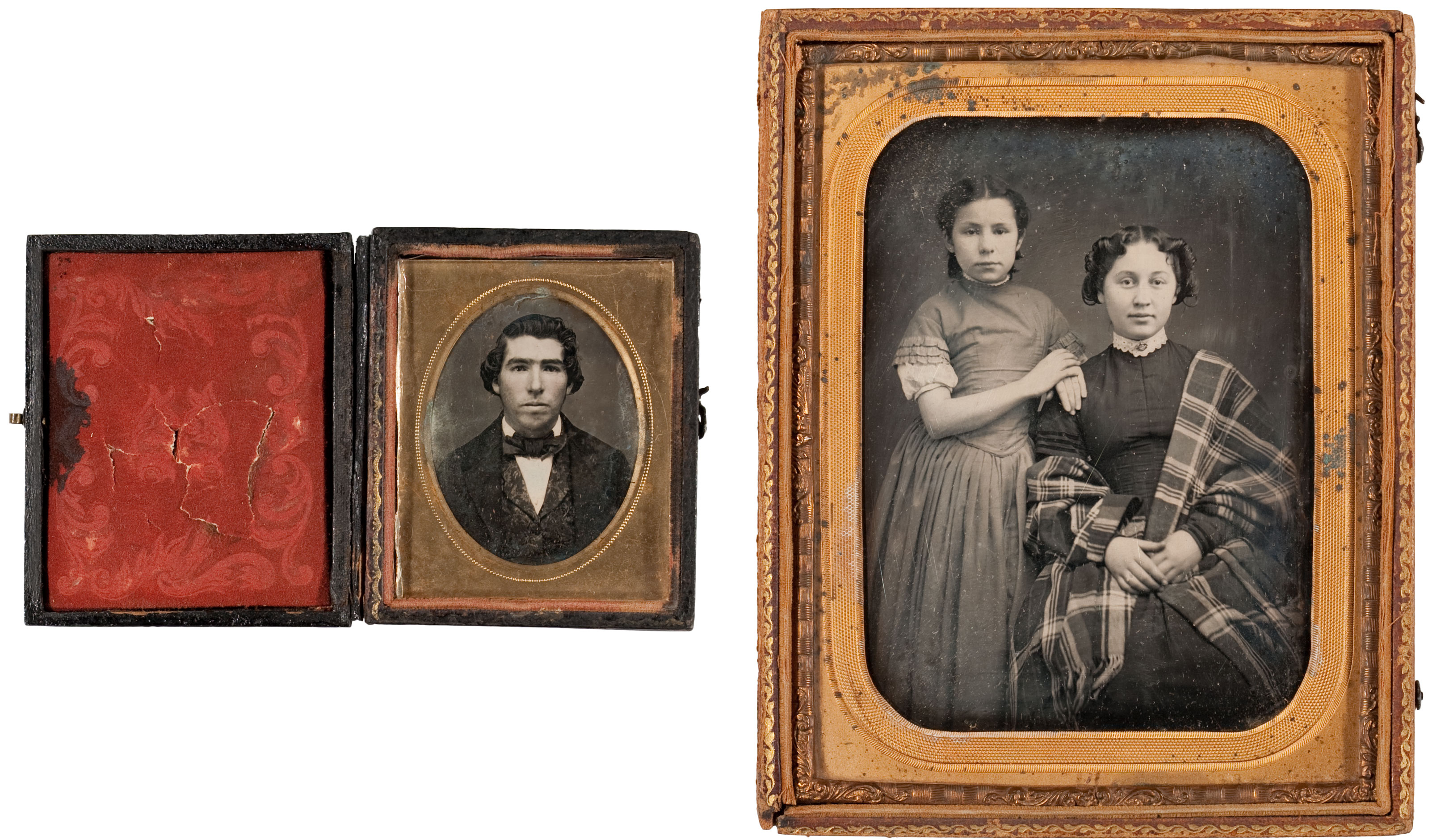
Shown here is a comparison in size between the ninth plate and half plate.
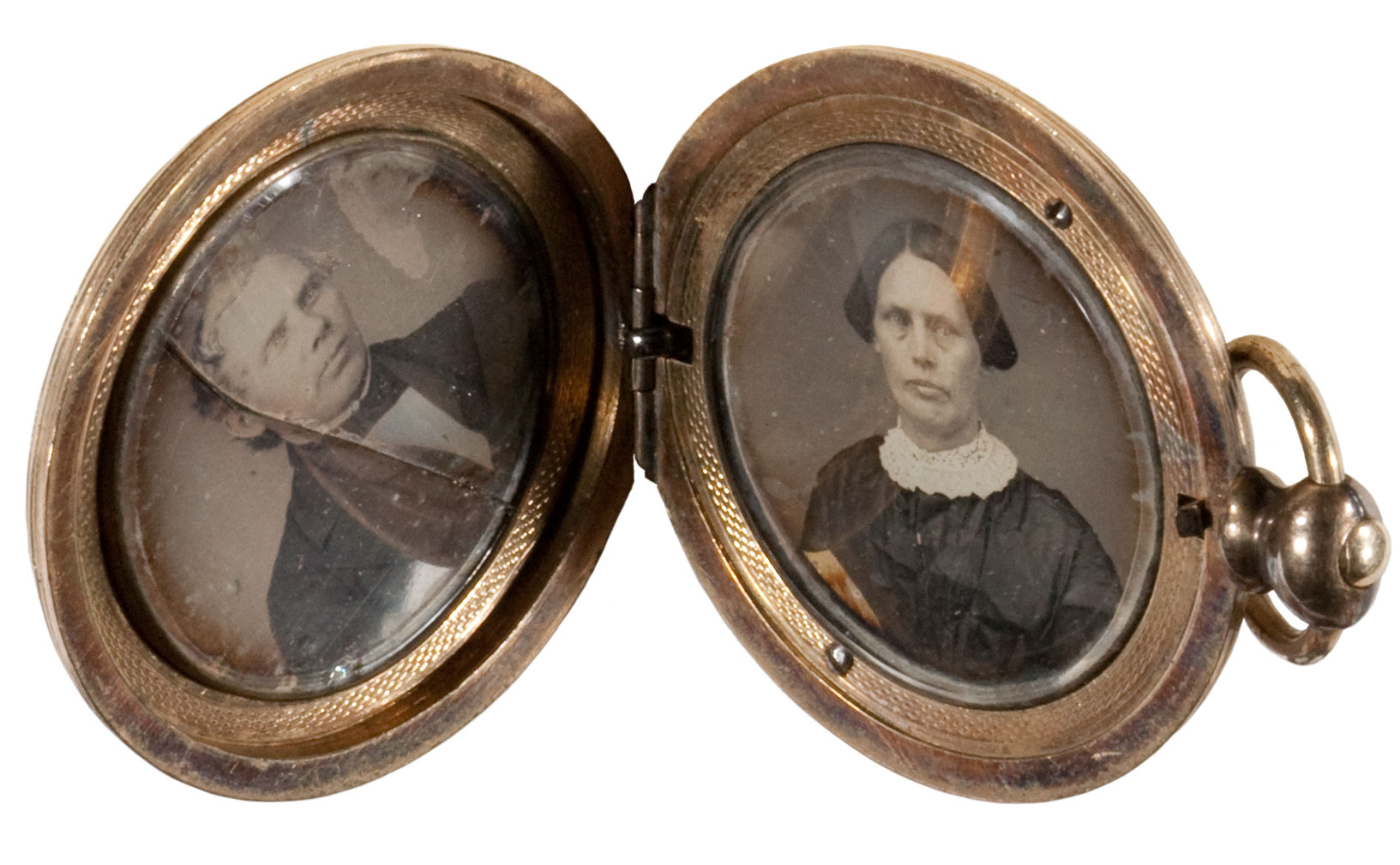
Daguerreotypes were also incorporated into objects like lockets and jewelry.

Hand coloring is may be subtle or very obvious.
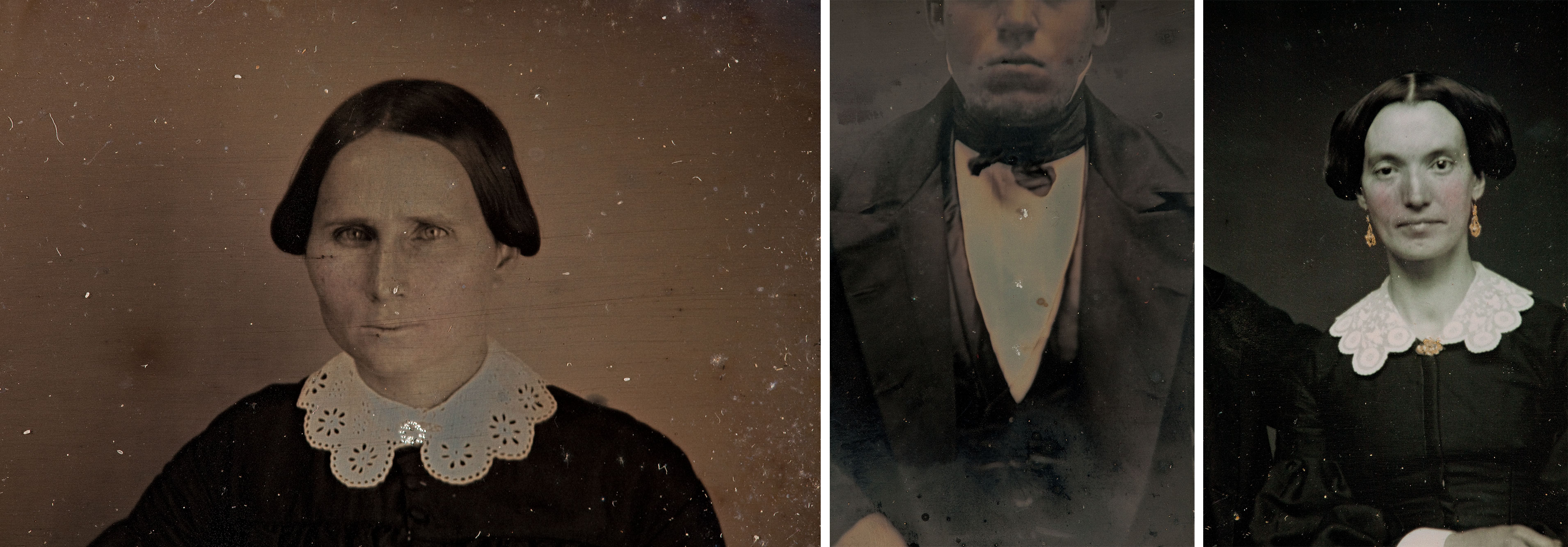
Jewelry could be enhanced by mechanically picking the plate with a needle or with gold paint.
Occasionally, information may be written on a piece of paper and placed inside the case along with the plate. Though rare, objects such as other photographs or locks of hair can sometimes be found inside the case as well.